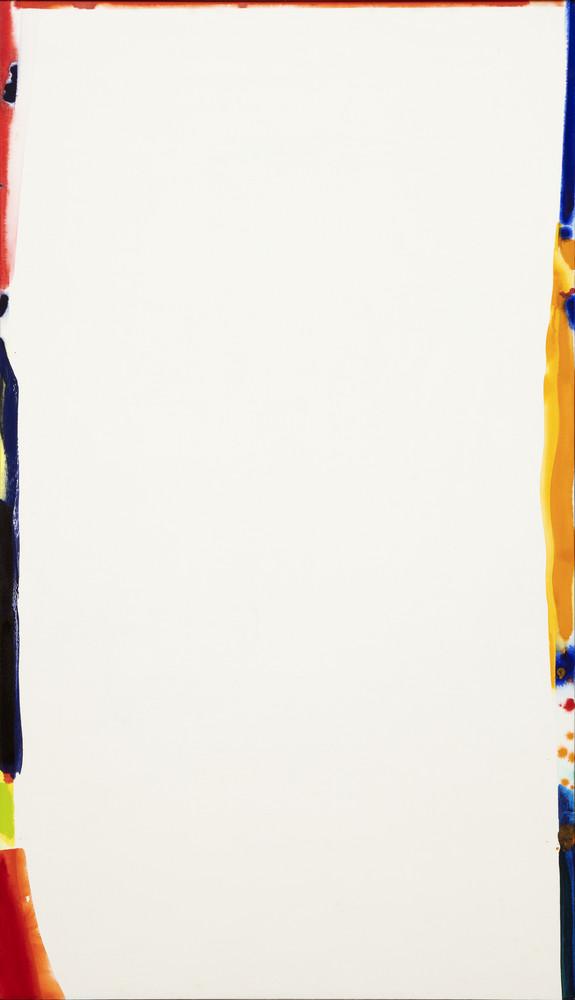Skip to main content
Untitled, from Mako Series
Artist
Sam Francis
(American, 1923 - 1994)
Date1967
MediumOil on canvas
DimensionsUnframed: 73 1/8 x 42 in. (185.74 x 106.68 cm)
Framed: 73 7/8 x 42 3/4 x 2 1/4 in. (187.64 x 108.59 x 5.72 cm)
Framed: 73 7/8 x 42 3/4 x 2 1/4 in. (187.64 x 108.59 x 5.72 cm)
Credit LineCollection of the Modern Art Museum of Fort Worth, Gift of the Artist
Object number1968.38
Status
Not on viewCopyright© 2020 Sam Francis Foundation, California / Artist Rights Society (ARS), New York
Category
Label TextIn the 1950s, Sam Francis traveled extensively, and by the end of that decade he maintained studios in Los Angeles, Paris, and Tokyo. Although his artistic concerns were shaped by his time spent abroad as much as they were by his American experience, Francis is often considered part of the second wave of the American Abstract Expressionist movement.
Francis created Untitled (Mako Series), 1967, while living in Japan, and named it after his then-wife, the artist Mako Idemitsu. Like all the works in this series, which came to be known as “edge paintings,” Untitled refined the artist’s long-term exploration of the relationship between the canvas’s center and its edges. Untitled is a pristine white painting with slivers of color along its perimeter. The bright, masked-off areas of red, yellow, blue, orange, pink, and green, in their juxtaposition with the stark white center, create a complex dynamic. Although the work is mostly white, the wedges of saturated pigments along the borders visually compete for dominance.
Japanese aesthetics helped establish Francis’s particular approach to Untitled. The spaciousness of the painting suggests the openness of light, sky, and sea of the country’s geography, and the work incorporates the idea of equilibrium between opposites seen in Japanese landscape design and landscape painting. The subtle and spiritual qualities of the Japanese aesthetic tradition, in which emptiness is not considered a void but rather an integral space, extends to Francis’s cool, crisp canvas. In Untitled, whiteness creates a contemplative space that is balanced with color.
Francis created Untitled (Mako Series), 1967, while living in Japan, and named it after his then-wife, the artist Mako Idemitsu. Like all the works in this series, which came to be known as “edge paintings,” Untitled refined the artist’s long-term exploration of the relationship between the canvas’s center and its edges. Untitled is a pristine white painting with slivers of color along its perimeter. The bright, masked-off areas of red, yellow, blue, orange, pink, and green, in their juxtaposition with the stark white center, create a complex dynamic. Although the work is mostly white, the wedges of saturated pigments along the borders visually compete for dominance.
Japanese aesthetics helped establish Francis’s particular approach to Untitled. The spaciousness of the painting suggests the openness of light, sky, and sea of the country’s geography, and the work incorporates the idea of equilibrium between opposites seen in Japanese landscape design and landscape painting. The subtle and spiritual qualities of the Japanese aesthetic tradition, in which emptiness is not considered a void but rather an integral space, extends to Francis’s cool, crisp canvas. In Untitled, whiteness creates a contemplative space that is balanced with color.







